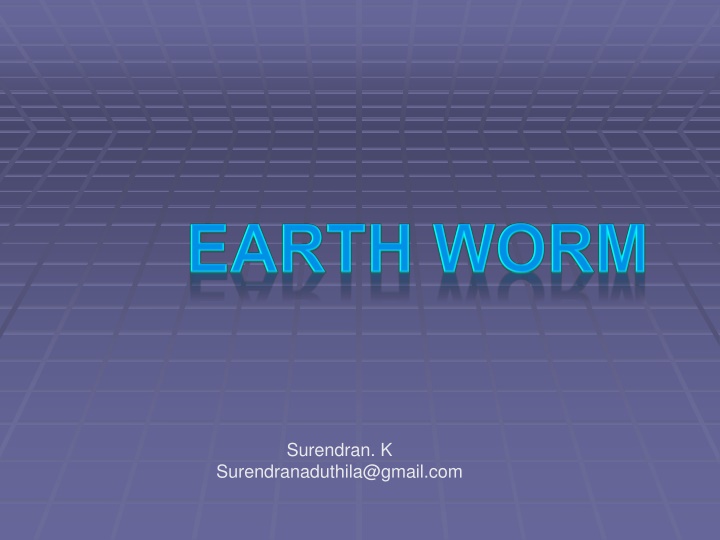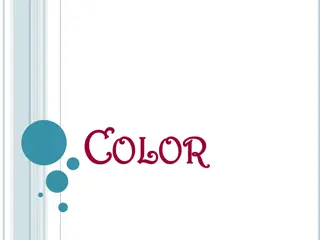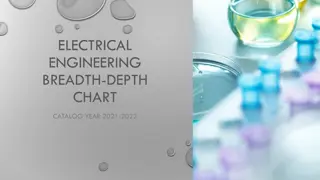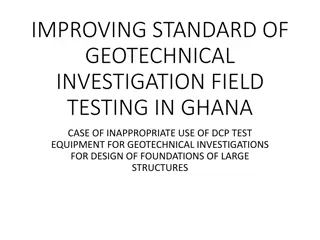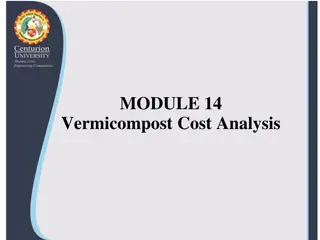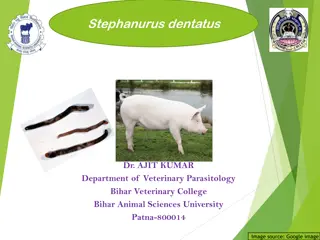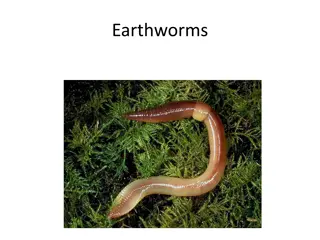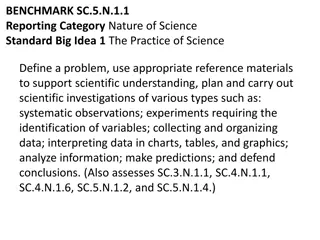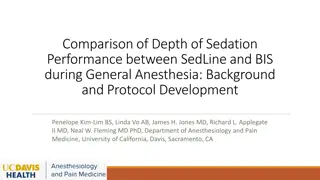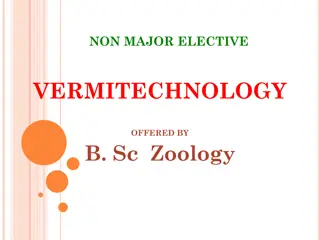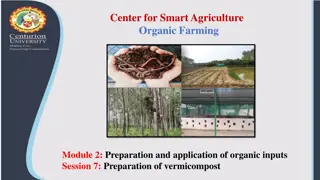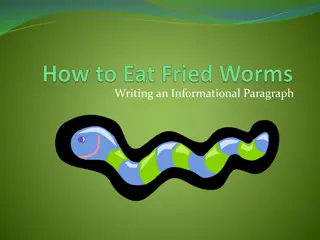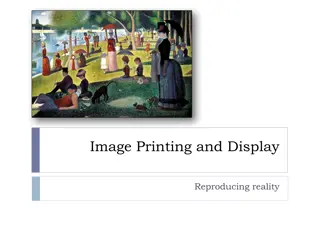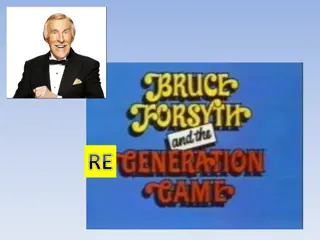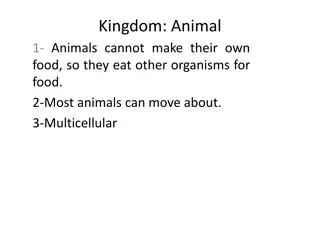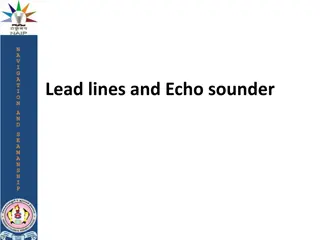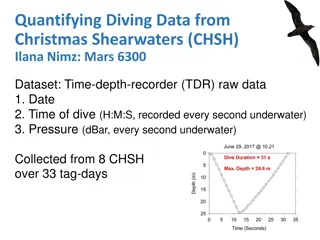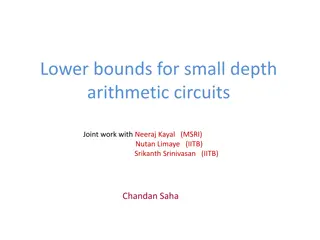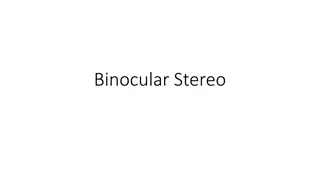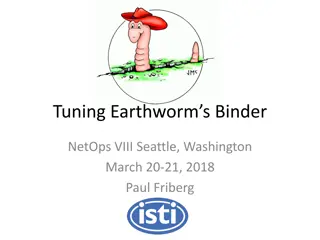Fascinating World of Earthworms: An In-Depth Look
Earthworms, belonging to the phylum Annelida, are nocturnal creatures found in moist soil. They play a crucial role in soil health and decomposition processes. With their unique morphology and habitat preferences, earthworms exhibit interesting behaviors like burrowing and regenerating. This article delves into the external and internal characteristics of earthworms, highlighting their importance in the ecosystem.
Download Presentation

Please find below an Image/Link to download the presentation.
The content on the website is provided AS IS for your information and personal use only. It may not be sold, licensed, or shared on other websites without obtaining consent from the author.If you encounter any issues during the download, it is possible that the publisher has removed the file from their server.
You are allowed to download the files provided on this website for personal or commercial use, subject to the condition that they are used lawfully. All files are the property of their respective owners.
The content on the website is provided AS IS for your information and personal use only. It may not be sold, licensed, or shared on other websites without obtaining consent from the author.
E N D
Presentation Transcript
Surendran. K Surendranaduthila@gmail.com
EARTH WORM Phylum : Annelida Class : Oligochaeta Genus : Megascolex Species : mauritii
HABIT HABIT NEGATIVELY PHOTOTACTIC NOCTURNAL LOCOMOTION BURROWING FEEDING BREEDING REGENERATION
Earthworms are terrestrial animals inhabiting the moist soil. They are usually found in the upper layer of soil to a depth of 30-40cm. They are nocturnal and in day time they live in the burrows.During rainy season they come out and crawl on the ground. During winter they close the burrows by leaves and debris. This is to warm the burrows. Their presence is marked by the occurrence of worm cast, the faecal deposit of earthworm. There earthworm. Of which 13 are found in India. Common varieties are Pheretima and Lumbricus are about 500 species of
EXTERNAL MORPHOLOGY A fully grown earthworm measures about 150mm in length and 3-5mm width The body is cylindrical and elongated. The anterior end is pointed , while the posterior end is rounded.
EARTHWORM Body Segments Prostomium Peristomium 14-16 segments: Clitellum Glandular tissue covering Metameres 100-120 Dorsal side- dark mid dorsal line Ventral side- genital openings Ant. End- Mouth, Prostomium, Peristomium
Body apertures 1. Spermathecal Pores 2. Female genital Pores 3. Male genital pores 4. Nephridiopores 5. Dorsal pores 6. Anus
INTERNAL MORPHOLOGY Cuticle, Epidermis, Two muscle layers, Coelomic Epithelium The body wall is covered externally by a thin non- cellular cuticle. It is followed by two muscle layers and an inner most coelomic epithelium.The epidermis consists of single layer of columnar cells.Secretory gland cells are also found among the columnar cells
All segments except first and last bear a ring of microscopic S-shaped chitinous setae ,help in locomotion.by gripping on the soil T.S. of bodywall showing Setae
Digestive system It is a straight tube and runs from the first to the last segments. It consists of mouth(peristomium),buc cal cavity , pharynx, oesophagus,a muscular gizzard, stomach, intestine and anus
Circulatory system In earthworm ,the circulation is closed type.The circulatory system consists of heart, blood vessels, capillaries and blood glands
Excretory system Nephridia Segmentally arranged nephridia are the excretory organs. There are three types of nephridia septal, integumentary and pharyngeal.
NERVOUS SYSTEM The nervous system consists of segmentally arranged ganglia and a ventral nerve cord. A ganglion is a mass of nerve cells. Nerve ring Ventral Nerve cord Sense Organs
Reproductive system Earthworm is hermaphrodite or bisexual . Male reprodutive organs Testis Seminal vesicles Semimal funnels Vasa differentia Prostate glands
Female reproductive system Ovaries Oviduccal funnels Oviducts Spermatheca surendranaduthila@gmail.com
INTERACTION WITH MANKIND WORM CAST VERMI COMPOSTING FOOD MEDICINE
thanks SURENDRAN. K
This powerpoint was kindly donated to www.worldofteaching.com http://www.worldofteaching.com is home to over a thousand powerpoints submitted by teachers. This is a completely free site and requires no registration. Please visit and I hope it will help in your teaching.
